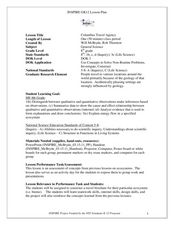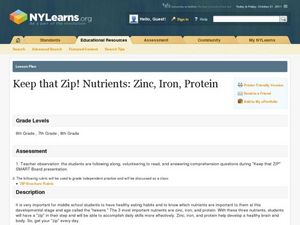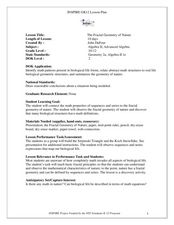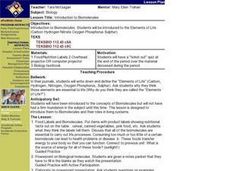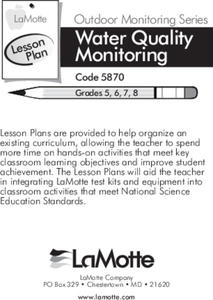Curated OER
The Clark Family Story: Tracing the Cause of Hemophilia
Ms. Strohfeldt did not omit anything when she designed this comprehensive lesson plan on DNA mutation and sex-linked traits. Begin with a pretest as an anticipatory set. Read a case history of the Clark family and the occurrence of...
Curated OER
WET Science Lesson #5: Pass the Salt Please! (How Road Salt Affects Wetlands)
As an anticipatory set, biologists listen to the story of Ruth Patrick, a scientist who used algae to detect water quality. They observe a demonstration of osmosis and diffusion. In their lab groups, they place Elodea stalks in...
Curated OER
Making Twins
A short reading is accompanied by a quiz in a resource describing the differences between identical and fraternal twins. The quiz is mostly true/false and would make an excellent anticipatory set to get kids thinking about what they know...
Curated OER
Safety in the Biology laboratory
Students review safety in the biology laboratory. They summarize the rules and safety procedures by completing several activities such as practice questions, taking notes andbecoming familiar with the location of safety equipment.
Curated OER
TAKS Biology Review
Students review some TAKS objectives in life science preparing for the upcoming TAKS test. They are given their TAKS review workbook, students look at objectives 1 and 2 in the workbook. Students review and ask questions about the...
Curated OER
Columbus Travel Agency
Eighth graders research about their chosen ecosystem. In this life science lesson plan, 8th graders play the role of travel agents and create a travel brochure. They share this in class.
Curated OER
Microscopes: Is what you see, what you got?
Eighth graders identify the parts and functions of the microscope. In this biology lesson, 8th graders observe different samples under different types of microscopes. They compare and contrast the details they see.
Curated OER
Anatomy of the Heart
Tenth graders examine the different parts of the heart. In this biology lesson, 10th graders perform dissection of the fetal pig. They explain how the heart maintains homeostasis.
Curated OER
Games and Activities to Teach Molecular Genetics
Students demonstrate a working knowledge of cell interactions such as DNA replication, protein synthesis (transcription and translation), through active participation in a cooperative group.
Curated OER
Introduction to Biomes
Eighth graders identify the different kinds of biomes. In this life science instructional activity, 8th graders explain their importance in an ecosystem. They take a BrainPop quiz at the end of the instructional activity..
Curated OER
How Cells Reproduce
Learners construct a mitosis flip book. For this biology lesson, students describe the different stages of mitosis. They discuss the importance of cell reproduction.
Curated OER
Keep that Zip! Nutrients: Zinc, Iron, Protein
Students explain the importance of zinc, iron and protein. In this biology instructional activity, students create a brochure containing information about the three nutrients. They share their brochure in class.
Curated OER
Evolution
Students investigate the concept of evolution and its implications upon the origin and development of life. They conduct research using a variety of resources while focusing upon cross-over and mutations. The information is used to set...
Curated OER
The Fractal Geometry of Nature
Students identify patterns found in nature. In this algebra lesson plan, students model situation in nature using fractals. They investigate biological geometric structures and draw conclusion based on geometric concepts.
Curated OER
Introduction to Biomolecules
Students are introduced to biomolecules and their roles in livin systems. They are introduced to the "Elements of Life." Students write down and define the "Elements of Life." They are asked why they think those elements are essential...
Curated OER
Black Death
Students examine the diseases of Europeans in Medieval times. In this plagues lesson students examine plagues of the past and some new modern ones.
Curated OER
Water Quality Monitoring of Natural Water
Students create their own monitoring program for natural water. They collect samples from an appropriate sampling site. They perform chemical and biological analyses of their samples. They present their information to the class.
Curated OER
Water Quality Monitoring of Natural Water
High schoolers set up their own monitoring system. They collect samples from an appropriate sampling site. They analyze data and determine the water quality. They present their information to the class and draw a conclusion.
Curated OER
Water Cycle (Grades 2-4)
Young scholars demonstrate their understanding of the water cycle and how it effects the environment by graphically depicting and describing the water cycle.
Curated OER
9 Phyla of the Animalia Kingdom.
Students identify characteristics of all 9 phyla of the Animalia Kingdom. They create a table of the 9 phyla and research a representative organism for each.





